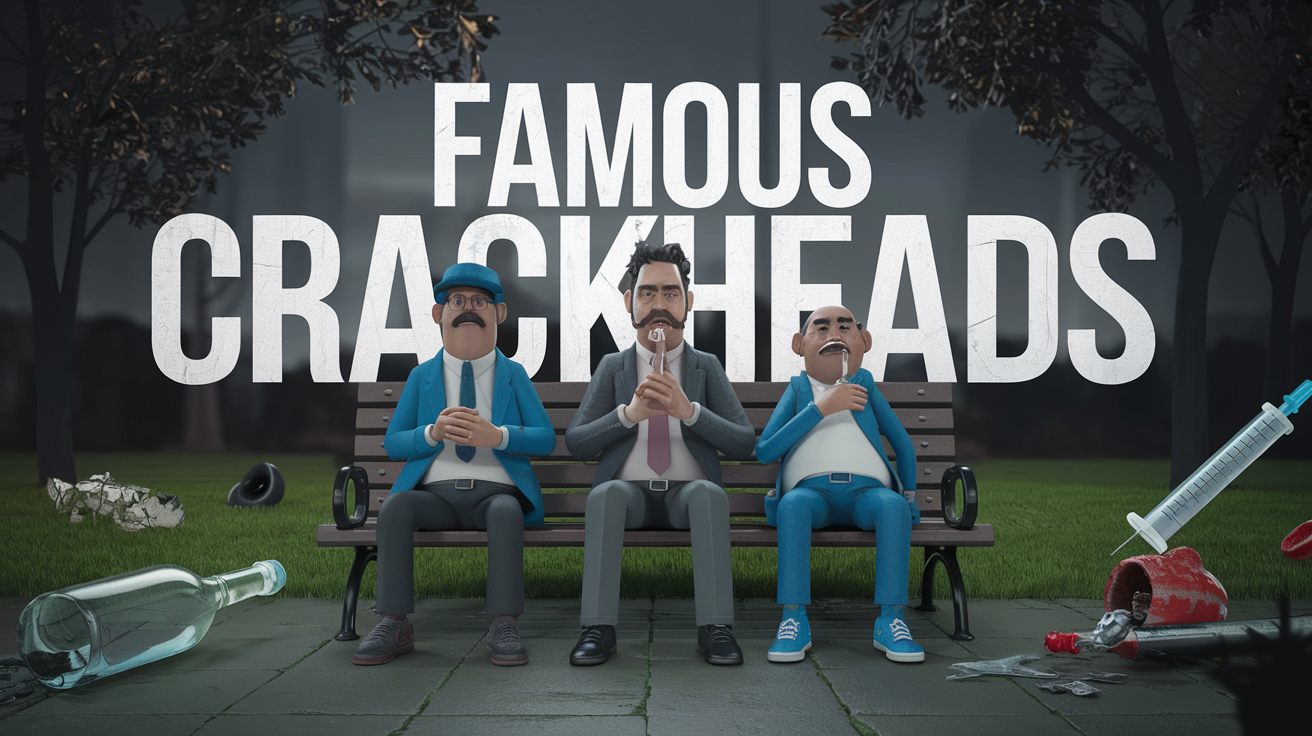Introduction: A Complex Issue in the Public Eye
The word crackhead is often used in famous culture to refer to individuals struggling with crack cocaine addiction. This term has been reported through media, movies, and public figures, sometimes minimizing the severe nature of addiction.
However, behind these jokes are real people whose lives have been shaped by the hardships of substance abuse. In this. Blog, we’ll dive deep into the stories of individuals labeled as famous crackheads, understanding their journey, their struggles, and the public’s perception of them. We’ll also explore the impact of habit on their personal and skilled lives and how recovery is a possible but often overlooked outcome.
Our goal is to offer an insightful view of this complex issue, clearing light on how addiction impacts the individual and society as a whole. By the end of this blog, you’ll gain a well-known understanding of famous people who struggled with crack habit, the media’s role in framing their stories, and the paths some took toward recovery.
The Rise of Crack Cocaine: A Brief History
To understand why specific people became labeled as “famous crackheads,” it’s essential to look at the rise of crack cocaine itself. In the 1980s, smash cocaine became a popular street drug in the USA, leading to general addiction, particularly in urban areas. It was cheaper and more available than powdered cocaine, making it highly engaging but incredibly dangerous.
The media’s description of crack users often maintained stereotypes, focusing mainly on African-American communities while overlooking the more well-known socio-economic and health-related factors that are directed to addiction. Celebrities, who have always lived under public inquiry, were not immune to the trick of this drug. Their battles with habit often played out in the public eye, turning them into symbols of the crack epidemic.
Celebrity Addiction: Why Do Famous People Struggle with Drugs?
1. The Pressure of Fame
One of the direct reasons why celebrities fall into drug addiction is the considerable tension that comes with fame. Many celebrities are pushed into the spotlight with little preparation for the mental and emotional strain of coincident success. Public scrutiny, relentless schedules, and the desire to maintain an image usually push them toward substance use.
In the case of break cocaine, its delightful effects made it an attractive escape for many individuals. High-profile figures such as comedian Richard Pryor and musician Whitney Houston struggled with addiction. The media’s consistent focus on their drug use further heightened their struggles, turning them into public horrors rather than offering help.
2. Lack of Privacy
Celebrities have often rejected the privacy that ordinary people take for granted. Their personal lives are splashed across tabloids and entertainment news, making it difficult for them to seek medicine for addiction without public decision. This lack of privacy can push them further into their drug use as their addiction becomes twisted with their public persona.
Famous Crackheads: Stories of Addiction and Recovery

1. Richard Pryor: Comedy Icon, Addiction Survivor
Richard Pryor, one of the most influential comedians of all time, had a well-known battle with drug addiction, especially with crack cocaine. Pryor’s addiction reached a peak in 1980 when he publicly set himself on fire while freebasing cocaine. His struggle with crack cocaine became part of his public description, and it was usually referenced in his stand-up comedy routines.
Despite his challenges, Pryor organized to get sober later in life, reflecting on his experiences through humor while advocating for recovery. His story indicates how even those deeply affected by addiction can find saving and recovery, but it also highlights the challenges of doing so under public inquiry.
2. Whitney Houston: The Voice That Couldn’t Be Silenced by Addiction
Whitney Houston, often called “The Voice,” had a career that passed over decades, with iconic songs such as “I Will Always Love You.” However, her vast talent was outweighed by her highly published battle with a crack cocaine habit. Whitney’s wild marriage to Bobby Brown, along with her struggles with significant abuse, was regularly covered in the media.
Her 2009 interview with Oprah Winfrey disclosed the depth of her addiction, as she admitted to using crack cocaine during the height of her career. Unfortunately, her addiction contributed to her untimely death in 2012. Houston’s story serves as a painful heartbreak—A reminder of the harmful impact of crack cocaine on even the most talented and unique individuals.
The Media’s Role in Shaping the Narrative
The term “crackhead” is loaded with negative definitions, often used to describe someone who has lost control of their life due to habit. The media plays a massive role in memorializing this image. Celebrity addictions are often reported, turning personal struggles into entertainment.
1. Stereotypes and Stigma
The media’s portrayal of crack cocaine addiction often reinforces harmful stereotypes, particularly those surrounding race and class. African-American celebrities, in particular, have been particularly marked as “crackheads,” while their white partners battling addiction are often portrayed more respectfully. This difference in media representation reinforces societal stigmas enclosing addiction, making it harder for people to seek help without fear of judgment.
2. Addiction to Entertainment
Tabloid culture thrives on disgrace, and addiction stories often become tabloid fodder. This focus on excitement rather than kindness turns addiction into aspect horror, making it harder for people to address their issues personally. High-profile addicts such as Whitney Houston, Amy Winehouse, and others have been the issue of countless articles, documentaries, and news stories, often underlining their downfall rather than their attempts at recovery.
Recovery and Redemption: Breaking the Cycle
1. The Importance of Support Systems
One familiar thread in the stories of celebrities who have overcome crack habits is the presence of solid consent systems. For example, Robert Downey Jr., who worked with drug addiction for years, credited his family, friends, and rehab schedules for helping him turn his life around. Today, Downey Jr. is known for his acting talent and as a symbol of deliverance.
Support strategies, whether in the form of family, friends, or professional help, play a crucial role in recovery. Unfortunately, not all celebrities have access to these systems, which can make the road to recovery even more challenging.
2. Seeking Professional Help
Professional rehabilitation programs are critical in dealing with crack addiction. Celebrities such as Samuel L. Jackson have plainly spoken about how rehab saved their lives. Jackson, who is now one of the most respectable actors in Hollywood, joined rehab in the early stages of his career after struggling with crack cocaine habit.
The stories of people like Jackson and Downey Jr. show that healing is possible with the right resources, even for those whose lives seem clarified by their addiction. However, for many people, both famous and not, access to quality rehabilitation remains of significant importance. Barrier.
Crack Addiction in Pop Culture: The Normalization of Drug Use?

1. Glamorizing Addiction in Movies and Music
Crack cocaine addiction has been promoted in pop culture for decades, from movies like New Jack City to lyrics in rap music. While some portrayals aim to shed light on the problematic facts of addiction, others simplify the issue, making it seem less painful than it is.
Many rap and hip-hop songs from the 1980s and 1990s referenced crack cocaine, often remembering the struggles of inner-city life where crack addiction was uncontrolled. Artists such as Rick Ross and Jay-Z have examined their experiences with the crack epidemic in their music, providing a raw and natural look at how this drug shaped their societies.
However, these descriptions can also blur the lines between warning tales and glamorization, making it harder for audiences, especially young people, to discern the actual outcomes of crack addiction.
The Road to Recovery: What Can Be Done to Help?
1. Reducing Stigma
One of the most crucial steps in addressing Famous Crackheads addiction is reducing the stigma enclosing it. Celebrities who speak plainly about their addiction and recovery play a vital role in regularizing the discussion about drug use. By dealing with addiction as a health issue rather than an honest failure, we can motivate more people to seek help without fear of judgment.
2. Increasing Access to Rehabilitation
Access to quality rehab programs is necessary in treating crack addiction. However, many people, particularly in overlooked communities, lack access to the help they need to recover. Support for better addiction therapy programs and improved funding for mental health services is vital in helping more people break free from addiction.
3. The Role of Media in Changing the story
Finally, the media commits to change the way it reports on addiction. Rather than minimizing the struggles of celebrities and everyday individuals alike, the media should focus on providing accurate information about addiction and recovery, emphasizing the possibility of saving rather than the sensation of downfall.
Conclusion: Changing the Way We View Crack Addiction

The reports of “famous crackheads” show us that addiction doesn’t discriminate—it affects people from all walks of life, including the rich and famous. While the media often turns these people into giving notice fiction, it’s important to remember that recovery is always possible by changing the way. We view habit and provide better resources for those who need help, and we can move toward a society that values understanding and support over decisions.
Addiction is a complicated issue that needs a multiple approach. By understanding the factors that contribute to Famous Crackheads addiction, both in celebrities and in society at large, we can work towards solutions that benefit everyone. Finally, the path to recovery is a personal journey, but with the proper support and resources, it’s one that anyone can take.
